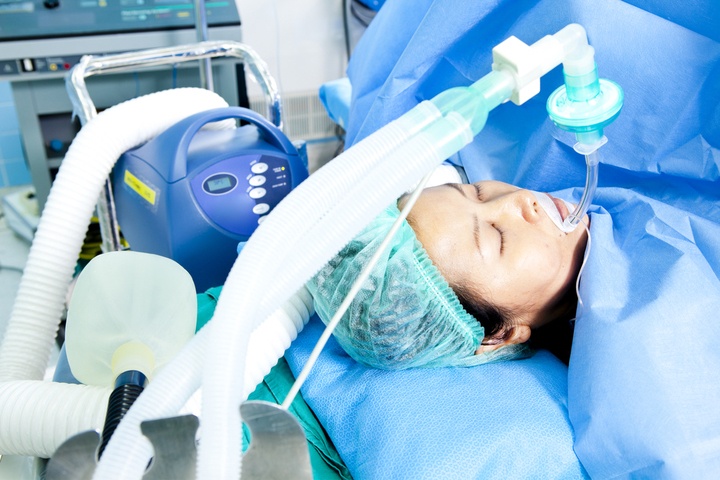When you arrive for your shift at the intensive care unit, the off-going nurse gives report: Your first patient, Jeff Ridley, age 65, was admitted 2 weeks ago with an exacerbation of chronic obstructive pulmonary disease. He required intubation; since then, attempts to wean him from the ventilator have failed, and he has had copious pulmonary secretions. Yesterday, a tracheostomy tube was placed to promote weaning; he’ll start trach collar trials this morning.
Suddenly, Mr. Ridley’s monitor alarm goes off, interrupting your colleague’s report.
Assessment hints
The monitor shows that the patient’s oxygen saturation (O2 Sat) has dropped to 87%, his heart rate is 85 beats/minute (bpm), and his blood pressure (BP) is 125/80 mm Hg. You try to suction him, but aren’t able to pass the catheter, and you wonder if a mucus plug is clogging the trach tube. Mr. Ridley’s O2 Sat continues to drop, his heart rate rises to 128 bpm, and his BP climbs to 150/96 mm Hg. His respiratory rate is 35 breaths/minute, with a ventilator rate of 16 breaths/minute.
On rapid assessment, you note he is restless and cyanotic. The trach tube and ventilator tubing don’t seem to be kinked or twisted, but you see very little rise and fall in the patient’s chest. As you start to disconnect the ventilator from the trach tube to place a manual bag-valve-mask, you identify subcutaneous emphysema in his neck (indicated by bulging skin and subcutaneous crackles). This finding means the trach tube most likely has become dislodged and air is being forced into the tissues instead of the lungs.
Before attaching the bag-valve-mask, you look, listen, and feel at the tube opening—but detect no air movement. You suspect the trach tube has been displaced into a false passage or the pretracheal space.
On the scene
Immediately, you begin manual oral bag-mask resuscitation ventilations and give supplemental oxygen per standing orders. Your colleague calls a code, and soon a respiratory therapist, an attending pulmonologist, and a large group of medical students file into the room. When one of the students grabs the obturator taped above the bed, the attending physician stops him and reminds him that the soft-tissue tract is immature (less than 24 hours old), which would make trach tube passage difficult without another surgical procedure. Mr. Ridley is then sedated and orally intubated.
Outcome
Once intubated, the patient’s O2 Sat quickly climbs to 92% and his heart rate and BP start returning to baseline. But because of his prolonged ventilator run, he still can’t be weaned completely. By the time he is transferred to a long-term acute care facility for more rehabilitation and ventilatory weaning, he’s tolerating trach collar trials with 35% oxygen for 4 hours twice a day.
Education and follow-up
A tracheostomy dislodgment can have devastating consequences unless remedied immediately. Although an obvious dislodgment would have made troubleshooting easier, the team’s response would have been the same.
Whether to reintubate the patient or reinsert the trach tube depends partly on the maturity of the soft-tissue tract. With an immature tract, as in this case, endotracheal intubation is indicated after the airway is opened and a bag-valve-mask is used. With a formed soft-tissue tract (one at least 36 hours old), it’s preferable to insert an obturator into the trach tube or to open a new trach tube, replace the tube into the existing stoma, and provide oxygen with a bag-valve-mask.
To prepare for a trach emergency, always keep vital equipment at the bedside: a trach tube of the patient’s size or one size smaller, a manual bag-valve-mask, suction and suction catheters, an obturater, and an oxygen source. Know which type of trach tube (percutaneous or surgical) your patient has, tissue-tract age, and any special patient considerations—for instance, obesity, a short neck, unusual anatomy, copious secretions, or tissue formation around the trach site.
Sean A. Fortney is a staff nurse in the Intensive Care Unit at St. Vincent Hospital in Indianapolis, Indiana. Jan Powers is a Critical Care Clinical Nurse Specialist at the same hospital.


















